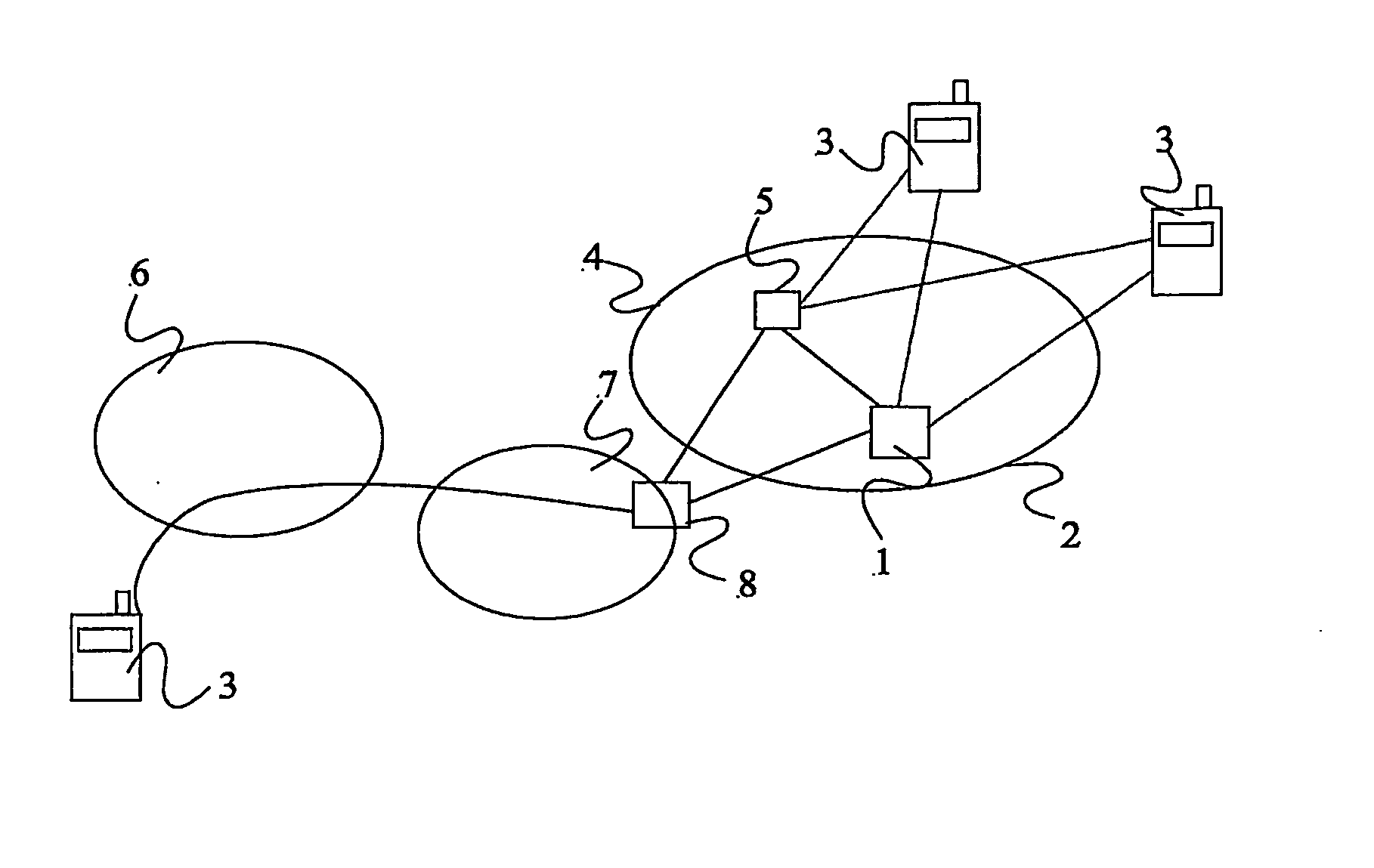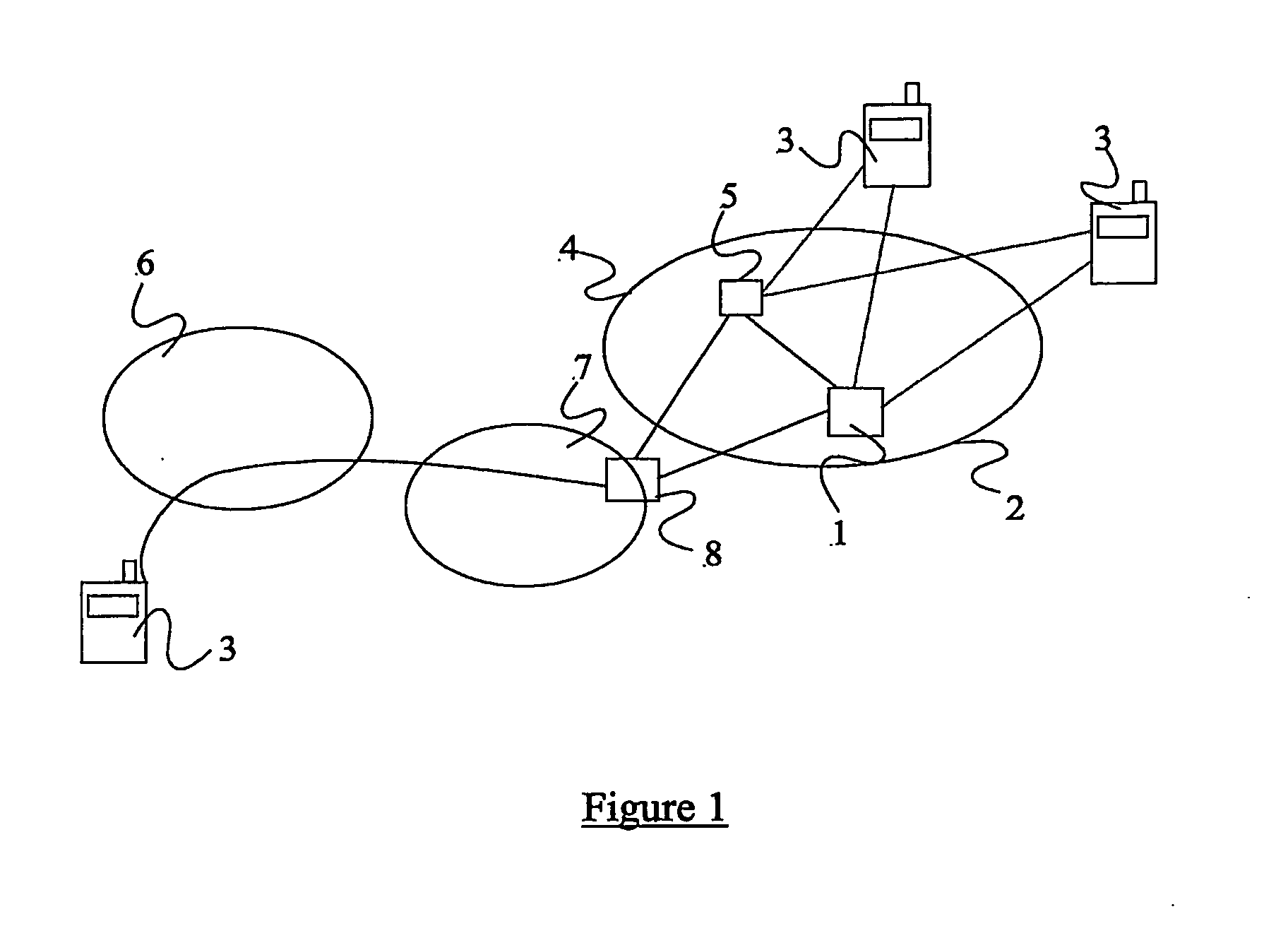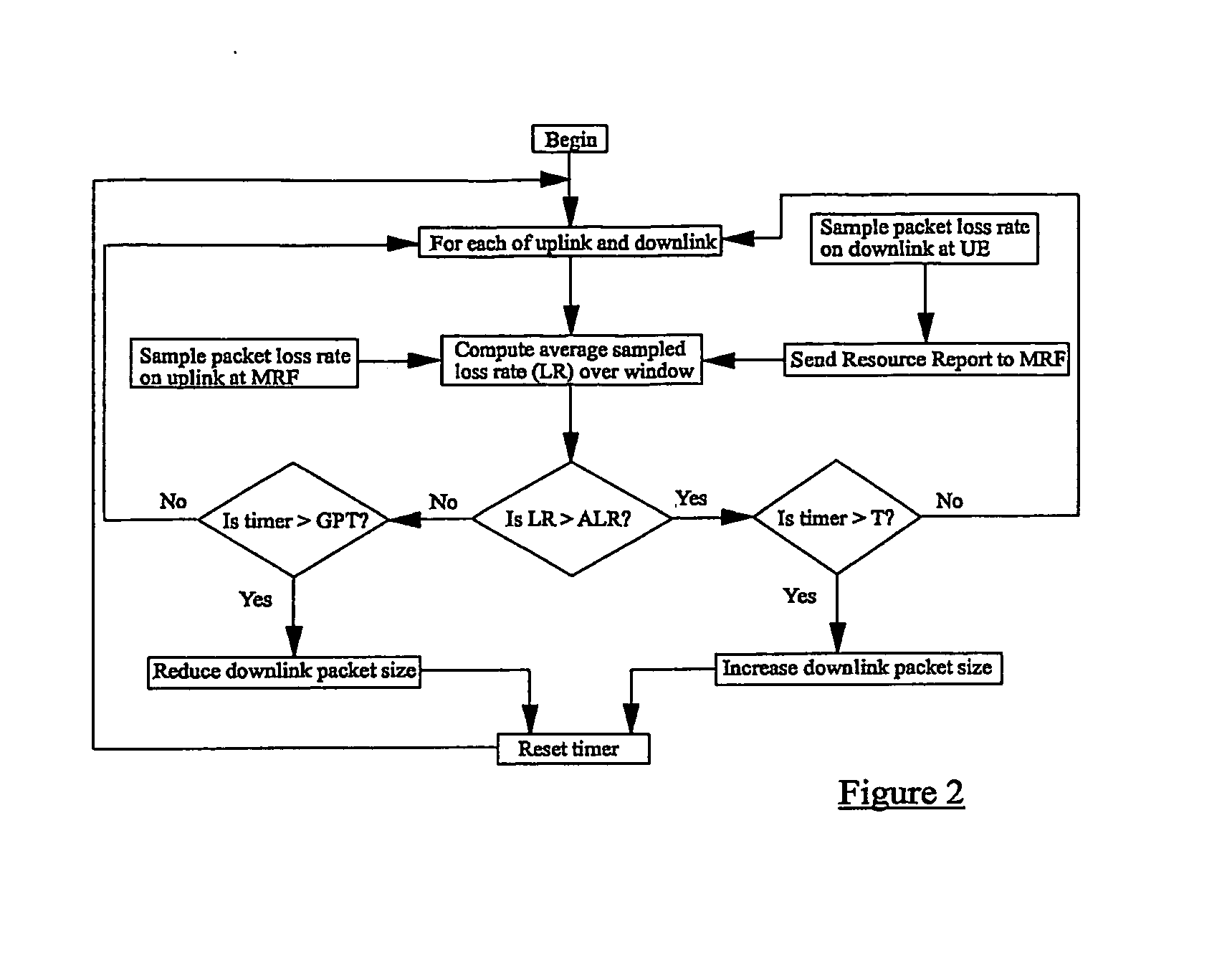Optimising Resource Usage in a Packet Switched Network
a packet switched network and resource utilization technology, applied in data switching networks, instruments, frequency-division multiplexes, etc., can solve the problems of not providing detailed algorithms or procedures to enable, and rtp cannot guarantee real-time delivery of multimedia data, so as to increase or decrease the size of packets sent over the link
- Summary
- Abstract
- Description
- Claims
- Application Information
AI Technical Summary
Benefits of technology
Problems solved by technology
Method used
Image
Examples
Embodiment Construction
[0021] Considering now in detail the PoC service, a single MRF can manage thousands of talk sessions, with each session being independent from other sessions that may be hosted by the same MRF. A given talk session will comprise two or more pieces of user equipment (UE) and the central MRF. These UEs might each have different capabilities. Talk bursts from a UE are encoded and sent to the MRF (via respective GGSNs) as one or more RTP packets, referred to here as simply “packets”. The MRF then forwards the packets to the or each other UE participating in the same talk session. The path which the packets take from the UE to the MRF is called the “uplink”. The path which packets take from the MRF to the UE is called the “downlink”. The rate of packet loss may be different for each link in the chain. Particularly for real-time applications such as VoIP, the quality of the perceived user experience is critically dependent upon the rate of packet loss. A talk session involving ten UEs wil...
PUM
 Login to View More
Login to View More Abstract
Description
Claims
Application Information
 Login to View More
Login to View More - R&D
- Intellectual Property
- Life Sciences
- Materials
- Tech Scout
- Unparalleled Data Quality
- Higher Quality Content
- 60% Fewer Hallucinations
Browse by: Latest US Patents, China's latest patents, Technical Efficacy Thesaurus, Application Domain, Technology Topic, Popular Technical Reports.
© 2025 PatSnap. All rights reserved.Legal|Privacy policy|Modern Slavery Act Transparency Statement|Sitemap|About US| Contact US: help@patsnap.com



